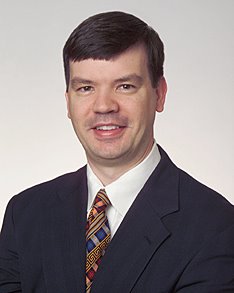
Tragic events have a way of stimulating bad legislation.
Co-conspirator in Plastic Surgery blogging, "Dr. 48307",
Tony Youn had a very insightful retort a few weeks backto a bill ("the
Donde West law") introduced in the California legislature (read
here) to
mandate medical clearance on all patients undergoing cosmetic surgery. Something similar is now being mentioned in Illinois. Dr Youn writes:
This is a very interesting bill, considering less than a year ago the California legislature passed a law permitting oral surgeons (DDS dentists) to perform all forms of facial plastic surgery. Instead of forcing surgeons to make their patients undergo preoperative testing (some young, healthy patients may not need it), maybe they should instead make sure that anyone performing plastic surgery is a real, board-certified plastic surgeon?
Keep in mind that California is also the state where a judge ruled in 2006 that a certificate from a non-recognized cosmetic surgery "board" organization was equivalent (or better!) to the American Board of Plastic Surgery for accreditation proposes over the objections of the state medical board for California, the American Medical Association (AMA), the American Society of Plastic Surgeons (ASPS), the American Board of Facial Plastic Surgery, the American Board of Medical Specialties (ABMS), and others. This ruling ignored the existing state law that allowed physicians to advertise board certification only if the certifying board or association is recognized by ABMS or deemed equivalent by the state medical board.
BACK TO THE "DONDE WEST" LAW
Broad non-directed medical screening by 3rd parties would be an extremely inefficient and unnecessarily expensive way to clear patients for surgery. Besides, this process already takes part as part of a patients' surgery evaluation. Now your doctor can be a tool, and adopt the blanket position that "I send all my patients for medical clearance before surgery", but that's just punting the ball and practicing defensive medicine to the extreme.
The scale we commonly use to characterize surgery patients' anesthesia risk, called the
ASA system, is a pretty good screening tool. The overwhelming amount of patients undergoing cosmetic surgery are low risk, and
ASA class I or II patients should not need "medical clearance". In addition, many primary care doctors have absolutely no idea what "medical clearance" means anyway, and get a little peeved when patients show up for non-
reimbursable office visits.
When we talk about medical clearance, it's usually in the context of chronic medical issues or asking whether the patient needs provocative testing for coronary artery disease. Patients who may need to be "tuned up" prior to surgery are those with:
- diabetes - Are there blood sugars under control?
- significant hypertension
- morbid obesity
- sleep apnea
- symptoms of (or strong risk factors for) coronary disease
Many of those conditions might be exclusionary for elective cosmetic surgery in the first place, particularly when combined. Keep in mind that the patient involved in the event triggering this reactionary bill, Donde West's, had undergone coronary testing earlier in the year (which was reportedly normal) and died over 24 hours postop from what sounds like a probable aspiration event. No amount of screening would prevent something like that.
"Smart Laws" relating to cosmetic surgery seem to be a little more difficult to implement. A more practical way to address the whole issue of office based surgery procedures would be to standardize the accreditation of facilities and remove the loopholes in some states that still exist. My state, Alabama, for instance has set a timetable for requiring accreditation for office an ambulatory surgery centers (ASC) over the next 18 months. The ASPS already makes it a requirement for membership that you will pledge to only operate in accredited (or planned accredited) office facilities. A common sense regulatory step would be to require hospital privileges for any surgery you'd propose to do in your office requiring sedation or general anesthesia, which would have the de facto effect of an additional level of credentialing applied by hospital medical staff offices. It's so common sense that it will be violently opposed by many "cosmetic surgeons" who would see their ability to practice cut off at the knees. Something to think about!
Thanks again Tony for your wonderfully entertaining blog!
Rob
 A nerdy public policy-wonk post today!
A nerdy public policy-wonk post today!
















